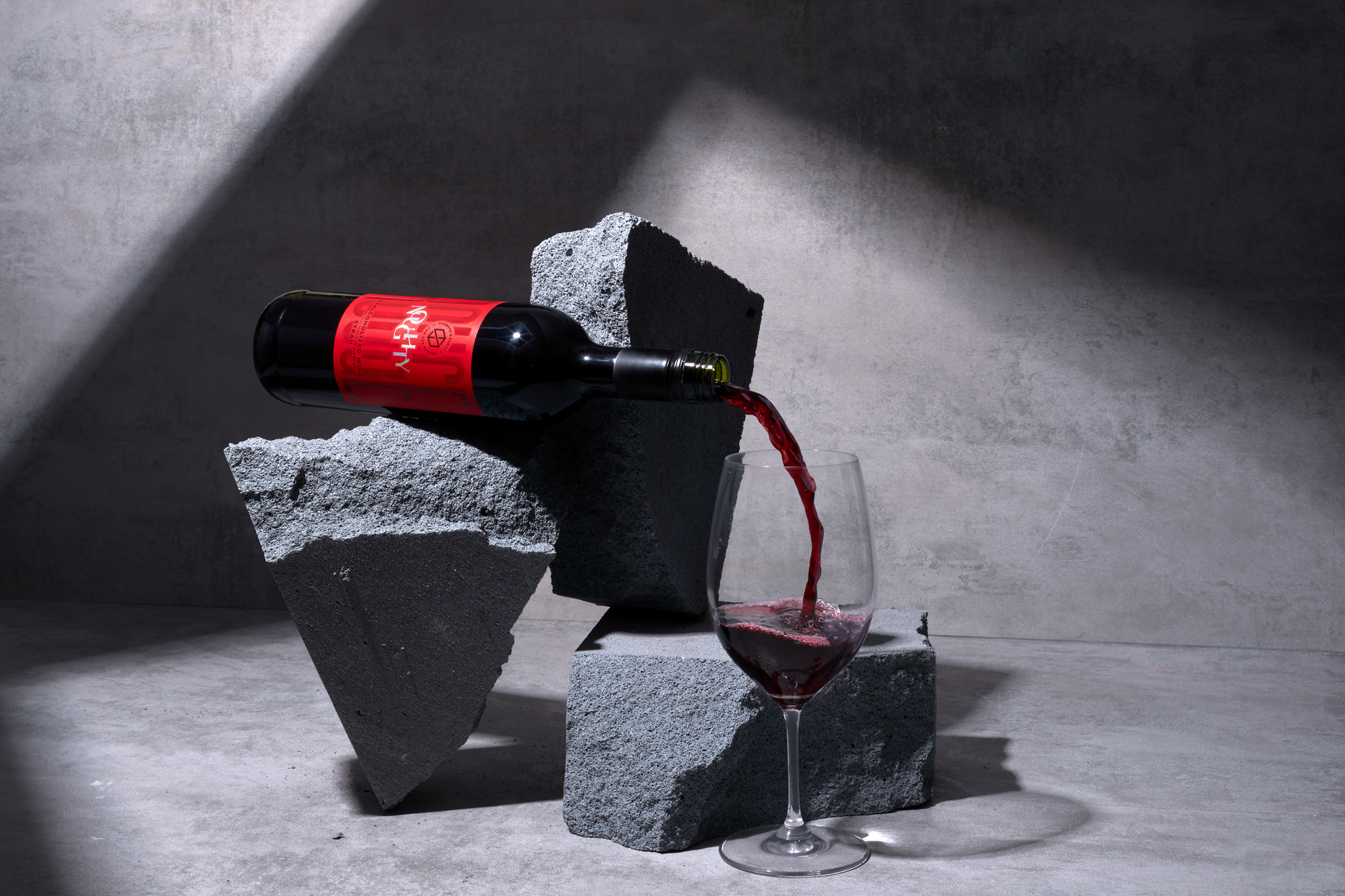When you first discover that non-alcoholic gin exists, it's like opening a door to a parallel universe where your favorite spirit thrives in a whole new way - with none of the harmful consequences or adverse implications.
You’re excited to try the different non-alcoholic gin recipes and share them with all your friends. But - your next question upon uncovering the wide world of alcohol-free gin is…how is non-alcoholic gin made?
You may have skepticism or concern about what goes on behind the scenes of making alcohol-free gin. So, we’re going to pull the curtain back and offer you an up close and personal look at the process of making alcohol-free gin.
We’ll talk about selecting (and extracting) the perfect botanicals, blending them together in a unique infusion, and bottling the sweet elixir. We'll also explore the art of crafting different flavor profiles and variations, as well as address common questions and misconceptions about this remarkable spirit. Pour up a glass of your favorite alcohol-free spirits and let’s dive in!
How is Non-Alcoholic Gin Made? A Detailed Look at the Alcohol-Free Gin-Making Process
So, how is non-alcoholic gin made? Do distillers follow the same process as traditional gin makers and simply remove the alcohol after the fact? No, there is actually never any alcohol in the spirit in the first place.

As a matter of fact, this is one of the main differences between the process of making this spirit and how non-alcoholic beer is made, which is often dealcoholized after it ferments.
Instead, distillers carefully select their own botanicals, extract them from their respective blends, and then infuse them - skipping the alcohol altogether. Below, we’ll take a deeper look at each step that goes into bringing this delicious, guilt-free spirit to life.
Selection of Botanicals
The first step in creating non-alcoholic gin is actually the most important - and that is the careful selection of botanicals. It dictates the experience the end user has in terms of taste and aroma. And thus, hours upon hours of consideration goes into this process when distillers sit down to formulate a new blend.
These are the herbs, spices, fruits, and other plant-based ingredients that give gin its distinctive flavor profile. Each distiller will have their own unique blend of botanicals, chosen for their specific flavors, aromas, and overall contribution to the final product.
Common botanicals used in non-alcoholic gin include juniper berries, coriander, citrus peels, angelica root, and many others. The precise combination of botanicals is often a closely guarded secret, contributing to the brand's signature taste.
This is what makes trying new varieties so exciting - getting to see how different botanicals work in synergy to achieve unique tastes and aromas. Once the botanicals for a blend have been chosen, they must be extracted with great care.
Extraction of Flavors
This is where the non-alcoholic gin-making process starts to differ from the traditional approach - which we’ll touch on later on.
When making 0% ABV gin, alcohol cannot be used as an extraction method for obvious reasons. Instead, distillers will utilize other techniques for extracting unique properties from their botanicals.
Some of these techniques include cold pressing, steam distillation, or vacuum distillation. Each of these has its place in a distillers arsenal:
- Cold pressing: Best suited for extracting essential oils from citrus fruits, such as oranges, lemons, and limes. It preserves the freshness and brightness of the flavors, as no heat is applied during the process. However, cold pressing is not as effective for extracting flavors from other botanicals, like herbs and spices.
- Steam distillation: Most commonly used in the extraction of essential oils from botanicals. It involves passing steam through the plant material, causing the essential oils to evaporate and then condense back into liquid form. Steam distillation works well for a wide range of botanicals, but it can cause some heat-sensitive compounds to break down, altering the final flavor and aroma.
- Vacuum distillation: This method uses lower pressure to reduce the boiling point of the essential oils, allowing them to be extracted at lower temperatures. This helps preserve heat-sensitive compounds and can result in a more delicate and nuanced flavor profile. However, vacuum distillation can be more expensive and time-consuming than other methods
Whatever techniques are used, they accomplish a common goal: they allow the flavors to be captured and concentrated without the need for alcohol.
This results in a pure, alcohol-free essence that retains the unique characteristics of each botanical. From there, it’s just a matter of blending the extracts together to create a flavorful, aromatic blend that delights your senses.
Blending
After the flavors have been extracted from the botanicals, the next step is blending. This is the stage where the art and skill of the distiller truly shine, as they carefully mix the different essences to create a harmonious and well-balanced flavor profile.
Each distiller has their own approach to blending, taking into account factors such as taste, aroma, and mouthfeel. The blending process often involves a great deal of experimentation, refinement, and fine-tuning, with the ultimate goal of crafting a non-alcoholic gin that delights the senses.
Dilution and Filtration
Once the blending process is complete, the non-alcoholic gin will undergo dilution and filtration. The concentrated essence is diluted with water to achieve the desired strength and consistency.
Filtration is then used to remove any impurities or sediment, ensuring a smooth, clean, and crystal-clear final product. This step is crucial in creating a non-alcoholic gin that not only tastes great but also looks and feels just as inviting as its traditional alcoholic counterpart.
Bottling and Packaging
The final step in the non-alcoholic gin-making process is bottling and packaging. Once the spirit has been diluted, filtered, and tasted for quality assurance, it's ready to be bottled in batches. The non-alcoholic gin is carefully poured into bottles, which are then sealed to maintain freshness and prevent contamination.
Packaging is a key aspect of the process, as it serves to protect the product during transportation and storage, while also communicating the brand's identity and values.
A well-designed package can pique consumers' interest and entice them to try this exciting, alcohol-free alternative to traditional gin. It’s what will eventually catch your eye as you start shopping and earn the bottle a spot on your shelves.
How Do They Make Non-Alcoholic Gin Variations and Flavor Profiles?

There you have it - you now know how to make non alcoholic gin. At least, you know the basics. But now, we want to progress the conversation a bit - how do they make non-alcoholic gin variations and flavor profiles? After all, this is what makes certain alcohol-free gins better than others.
This goes beyond the basics of carefully selecting botanicals, too. While that is certainly a huge part of creating new and exciting variations and flavor profiles, distillers have a multitude of tools in their arsenal to experiment.
For example, many distillers will experiment with different extraction methods after discovering a botanical blend they love. Or, maybe they’ll experiment with aging or infusion - resting the blended spirit with additional botanicals or using wooden barrels to impart specific flavors and characteristics to the final product.
This continuous innovation is why the wide world of NA gin is so exciting. You never know what to expect when trying a new blend!
Comparing the Processes for Making Non-Alcoholic Gin and Traditional Gin
You might be wondering….how is alcohol-free gin made in comparison to traditional gin? The processes are actually strikingly similar - with a few key differences. One of those intricacies lies in the very first step.
With traditional gin, it all starts with a base spirit. This is what gives traditional gin the alcohol. Typically, distillers will typically derive the spirit from grains like wheat, rye, or corn. Then, those grains will undergo fermentation and distillation to create a high-proof alcohol.

Another difference between the two processes is the extraction of flavors. Think back to what we discussed above in our section on how to make non alcoholic gin - we talked about the three methods used (cold pressing, steam distillation, or vacuum distillation).
But with traditional gin, the alcohol itself is used. Botanicals are steeped in the base spirit or placed in a gin basket, where their essential oils and flavors are extracted through the process of alcohol distillation.
There’s one more big difference in the process for how to make non alcoholic gin vs traditional gin - and that’s in the dilution/filtration phase. With traditional gin, this step is about more than just achieving a smooth flavor profile and removing impurities. It’s also about achieving the right ABV. Typically, gin falls somewhere between 37.5% and 50% ABV.
Other than that, though, the process for how to make alcohol-free gin is quite similar to traditional gin.
Common Questions About How to Make Non-Alcoholic Gin
Before we bring this conversation to a close, we want to address a few common questions we get in regard to how to make non-alcoholic gin.
Is Non-Alcohol Gin Actually No Alcohol?
It depends on the specific bottle you purchase. While many gins still contain some degree of alcohol, it’s usually extremely low alcohol (less than 0.05% ABV). This amount is considered negligible and is often found in everyday products like kombucha, vinegar, and some fruit juices. Nevertheless, you should carefully analyze the specific bottle in question if you want to feel confident knowing you’re getting 0% ABV gin.
Is Alcohol-Free Gin Just Water?
This is a common misconception - and hopefully now, you know the answer is a resounding no. While it is true that water is used in the dilution process to achieve the desired flavor intensity, non-alcoholic gin is a carefully crafted blend of botanical extracts, essential oils, and other flavors.
What Ingredients Are in Alcohol-Free Gin?
This is part of the fun that goes into trying different recipes - it’s ever changing. While non-alcoholic gin shares many of the same ingredients as traditional gin - like juniper berries - distillers will meticulously select a variety of other ingredients, ranging from coriander, angelica root, citrus peels, and a variety of herbs and spices. Sometimes, the specific botanicals used is a closely guarded secret - and you’ll never find out!

Final Thoughts on How to Make Alcohol-Free Gin
So, how is non-alcoholic gin made? It’s actually not too different from the traditional approach - with just a few slight variances in the process. If you want to learn more about this incredible 0% ABV spirit, read our guide on the facts about non-alcohol gin you need to know.
You can also exlpore our blog to learn more about the world of alcohol-free beverage - with resources covering topics such as non alcohol red wine benefits, what to mix with non alcoholic bourbon, non-alcoholic drinks to make at home, non alcoholic chardonnay, non alcoholic alternatives to beer, and more.
Otherwise, there’s just one thing left to do…see what flavor profiles and aromatic properties are waiting for you on the other end of the alcohol-free gin making process. You can find your new favorite non-alcoholic gin at Boisson: your trusted non alcoholic liquor store.
We source all our products from the industry’s most respected distillers. You can visit us in one of our in-person storefronts or shop online today!



